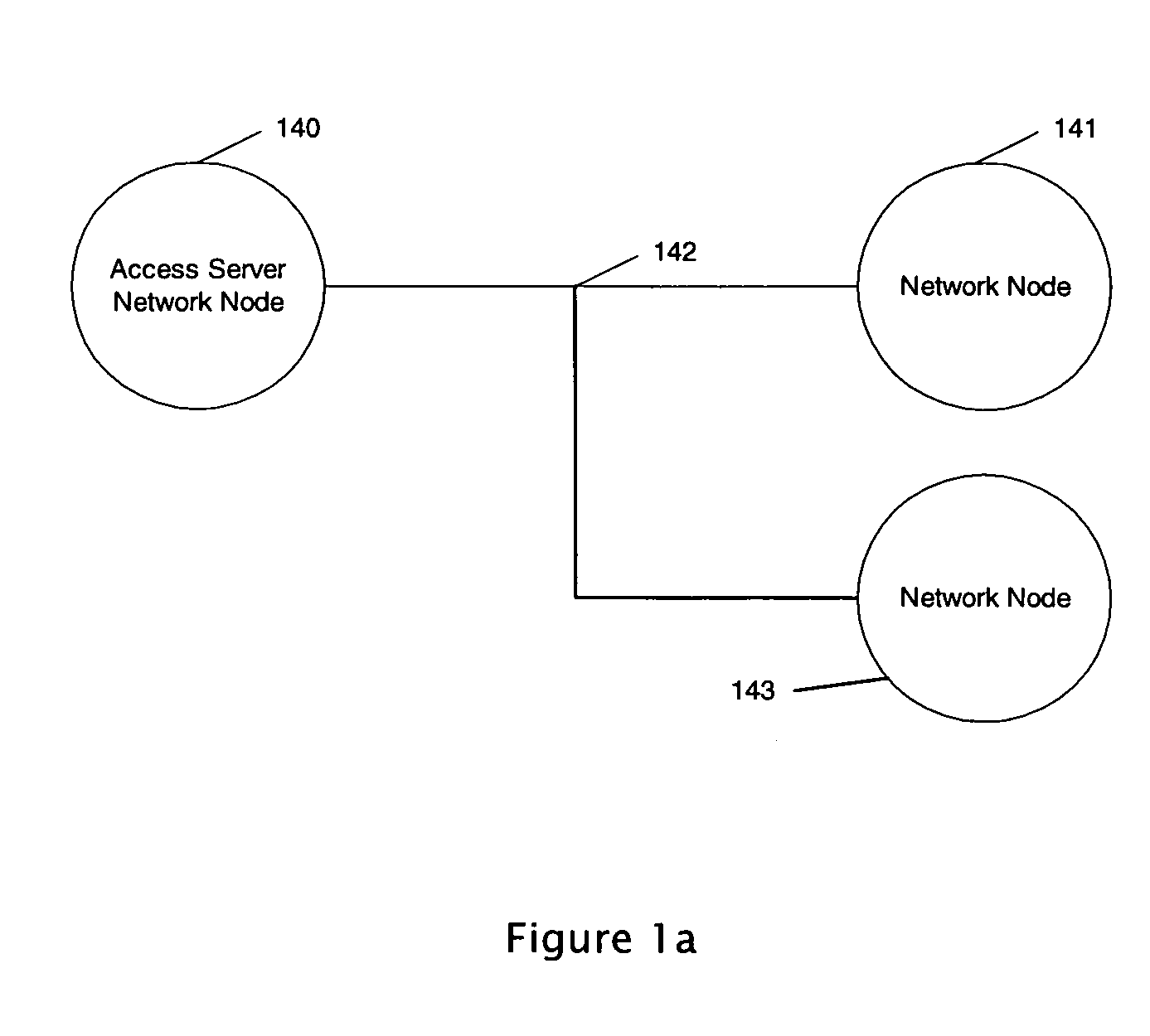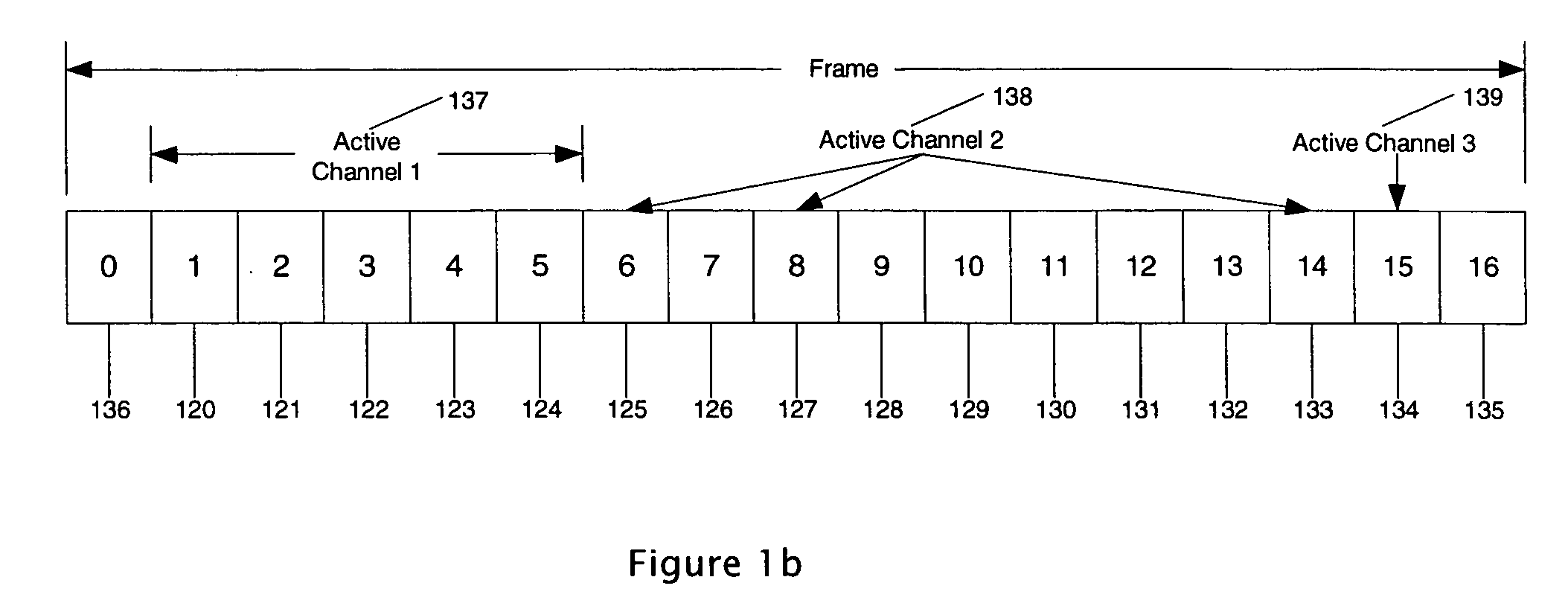System and method for requesting and granting access to a network channel
a network channel and access system technology, applied in the field of electronic communication systems, can solve problems such as inability to adapt to networks such as wireless and power line systems, and achieve the effect of efficient and fault-toleran
- Summary
- Abstract
- Description
- Claims
- Application Information
AI Technical Summary
Benefits of technology
Problems solved by technology
Method used
Image
Examples
Embodiment Construction
[0044]FIG. 1a is a diagram of the present preferred network for sending packets between network nodes. In this document when referring to a network node in the singular, while referencing the single node with multiple nodes indicates that all referenced nodes can perform the same function as the single network node. A network 142 is formed by plurality network nodes 140, 141 and 143. One of the network nodes 140 is also an access server which grants access to network nodes 140, 141, 143. Any node 140, 141, 143 can assume the role of access server if necessary. These packets are sent across a time division network which comprises time slots 120-136.
[0045]FIG. 1b is a diagram of the Time Division Multiplexed structure of the present preferred embodiment of this invention used to transfer data. Transfer of data across a network 142 occurs in two forms: packet and non-packet. Examples of data include but are not limited to voice, audio, control, video, and computer information. A frame...
PUM
 Login to View More
Login to View More Abstract
Description
Claims
Application Information
 Login to View More
Login to View More - R&D
- Intellectual Property
- Life Sciences
- Materials
- Tech Scout
- Unparalleled Data Quality
- Higher Quality Content
- 60% Fewer Hallucinations
Browse by: Latest US Patents, China's latest patents, Technical Efficacy Thesaurus, Application Domain, Technology Topic, Popular Technical Reports.
© 2025 PatSnap. All rights reserved.Legal|Privacy policy|Modern Slavery Act Transparency Statement|Sitemap|About US| Contact US: help@patsnap.com



